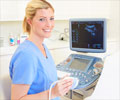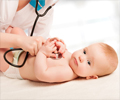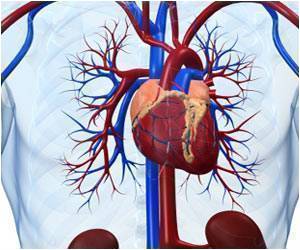Research shows that 5G-enabled robot-assisted echocardiograms match the accuracy of those performed in person by cardiologists.

Initial experience with a 5G cellular network and robotic arm-based remote echocardiographic system in an all-comers setting
Go to source). “Comprehensive echocardiographic exam with a 5G cellular network and robotic arm-based remote system is feasible with relatively good diagnostic accuracy,” said study author Dr Yu Liu, Zhongshan Hospital, Shanghai, China.
‘Did You Know?
The global robotic arm market is expected to grow from $12 billion in 2020 to over $20 billion by 2025. #echocardiogram #remotetechnology’





Echocardiography is the test of choice for the initial evaluation of many cardiac diseases and requires the expertise of a cardiologist for interpretation. The global robotic arm market is expected to grow from $12 billion in 2020 to over $20 billion by 2025. #echocardiogram #remotetechnology’
However, this expertise is often limited or unavailable in rural or indeed smaller urban areas. Robotic arm-assisted remote echocardiograms have been attempted for teleconsultation in previous studies1, 2, but analysis was limited to heart failure patients, primarily due to the network delay in telecommunications and the subsequent inadequate control of the robotic arm equipment.
In this study, the authors assessed the feasibility and diagnostic accuracy of a 5G cellular network and robotic arm-based remote echocardiographic system in an outpatient clinic based 20 kilometers away from Zhongshan Hospital.
A total of 51 patients were enrolled in the outpatient cardiology clinic. All underwent standard comprehensive echocardiography on a 5G cellular network robotic arm-based remote echocardiographic system, as well as a conventional echocardiographic platform (at Zhongshan Hospital) successively.
The order in which patients were examined on the remote and conventional instruments was randomly determined.
Advertisement
The doctor who used the remote system was also randomly allocated and had not been previously specifically trained. The examinations were real time and diagnoses were made immediately after the examinations.
Advertisement
How 5G and Robotics Are Transforming Echocardiography
From the 51 patients, the image quality was sufficient for diagnosis in 50 patients (24 (48%) female). A single patient was excluded because some key views could not be obtained using the remote system, meaning 98% of the examinations had been technically successful.Around one-third (17 patients) had a heart problem identified using conventional in-person echocardiography, including 10 with a primary diagnosis of valvulopathy (1 Barlow's syndrome, 1 bicuspid aortic valve, and 8 less-than-moderate regurgitation), 2 cardiac surgery follow-ups (1 case of aortic valve replacement and septal myectomy, and 1 case of mitral valve replacement and tricuspid annuloplasty), and 2 hypertrophy cardiomyopathy (including 1 case of obstruction at papillary muscle level), 2 with abnormal left ventricular wall motion (including 1 case of apical mural thrombus), and 1 with congenital heart disease (secumdum atrial septal defect).
Echocardiograms using the robotic arm resulted in the same diagnosis as conventional in-person echocardiography in 98% of cases (papillary muscle level obstruction was missed in one case).
Time for image acquisition using remote echocardiography was significantly longer (around 50% longer) than conventional (24 mins 36 secs vs. 16 mins 15 secs).
A previous version of the robotic arm has been cleared for clinical use in scanning the abdomen (China, Europe, Australia, and Singapore), which requires less complex scanning maneuvers.
However, the authors say a multi-center study at a larger scale with both other local hospitals and referral centers involved should be carried out before this new technology should be used.
Although 5G technology is not available everywhere, lead author Xianhong Shu, also of Zhongshan Hospital, said: “This system would increase the accessibility of better medical resources as patients may travel less to get a diagnosis and medical advice from cardiologists based in referral centers.”
She adds there are further potential advantages: “A remote robotic echo system may help protect more health professionals from the risk of exposure during pandemics like COVID-19 as the cardiologist may not need to be in close contact with the patient if only echocardiogram consultation is required.”
Reference:
- Initial experience with a 5G cellular network and robotic arm-based remote echocardiographic system in an all-comers setting - (https://esc365.escardio.org/presentation/286679)
Source-Eurekalert











